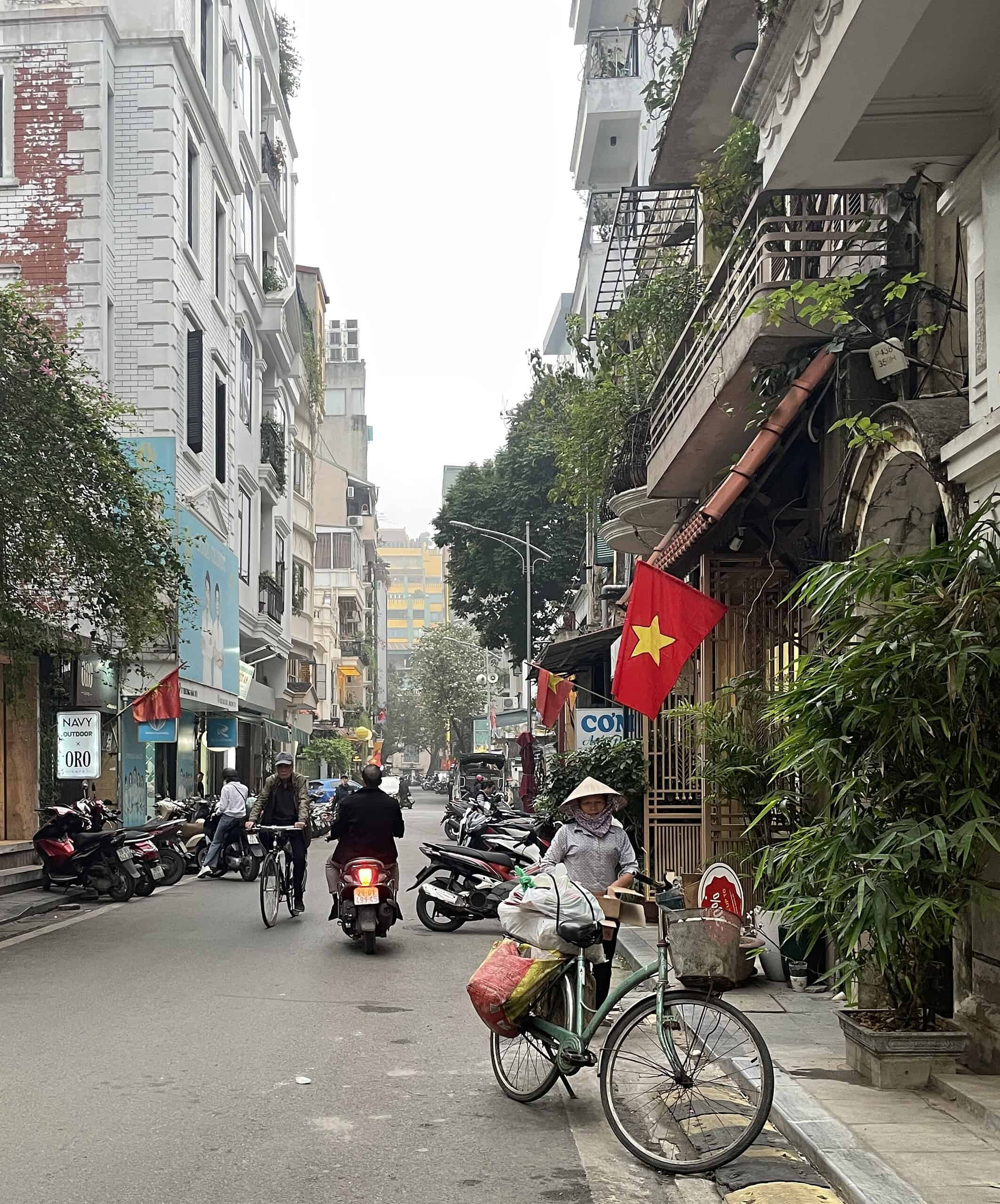Where to Stay in Hanoi, Vietnam: 7 Best Areas
Hanoi might be chaotic on the surface, but once you settle into the right neighborhood, it all starts to make sense, the buzz becomes background, the motorbikes become music, and suddenly, you’re wondering why you didn’t book a longer stay.
Figuring out where to stay in Hanoi, Vietnam, isn’t just a matter of budget; it’s about choosing a base that matches your travel style.
Want to be in the heart of street food chaos? The Old Quarter is your spot. Prefer lakeside cafés and a quieter pace? Tay Ho might be more your speed.
This sprawling capital is full of contrasts, and each district brings its kind of charm (and challenges).
I’ve stayed in Hanoi multiple times, from short stopovers to more extended visits, and I can tell you firsthand that your location can make or break the vibe of your trip. If Hanoi is just one stop on a longer journey through the country, my 2-week Vietnam itinerary can help you map it all out.
Let’s break down the best areas to stay in Hanoi so you can pick the one that fits your kind of adventure.
Old Quarter
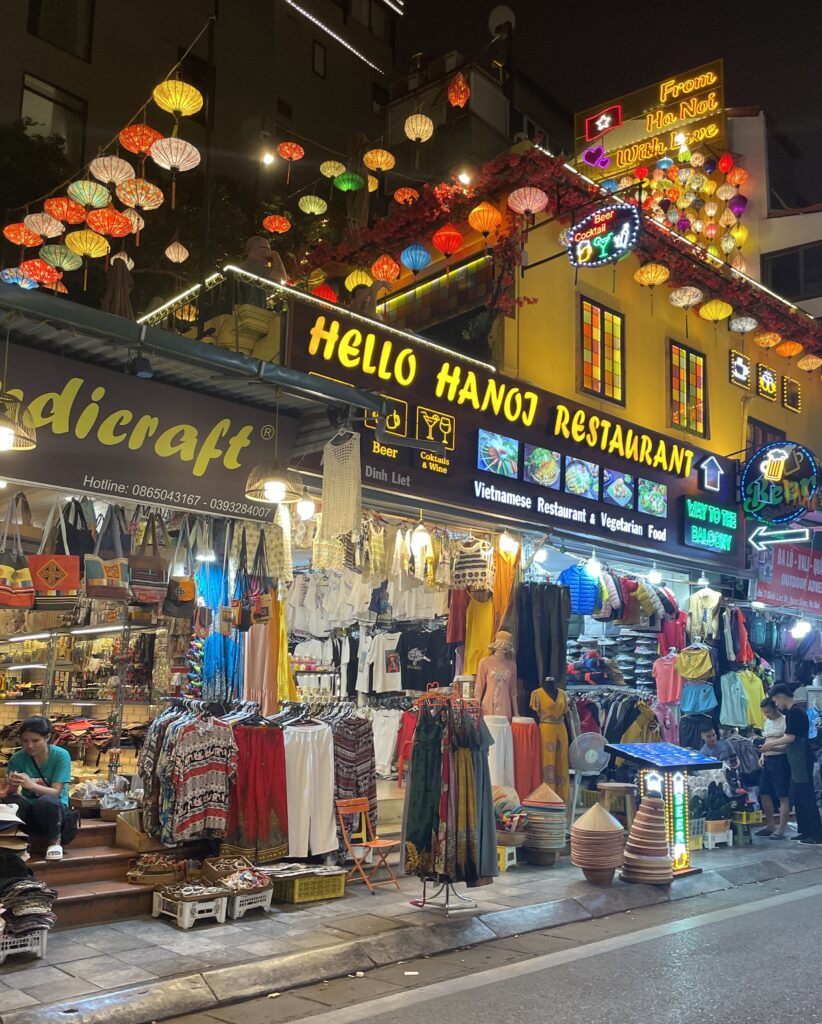
- Good for: First-timers, food lovers, photographers
- Vibe: Lively, historic, chaotic in the best way
- Pros & Cons: Central and full of life, but loud, crowded, and not for light sleepers
If it’s your first time in Hanoi, staying in the Old Quarter is pretty much a rite of passage. This area is Hanoi at full volume, tangled alleyways, sizzling street food on every corner, and buildings that look like a game of architectural Jenga stacks them.
You’ll be close to Hoan Kiem Lake, iconic egg coffee cafés, and night markets that never seem to wind down. And when hunger hits, this is prime territory for street food, especially pho. Some of the city’s most iconic bowls are right here in the Old Quarter, as I’ve detailed in my guide to the best pho in Hanoi.
It’s the kind of place where you’ll walk outside and immediately be immersed in the sights and sounds of scooters, sidewalk banh mi stands, and the hypnotic chaos of everyday life.
That said, “quiet” is not on the menu. If you’re sensitive to sound or want peaceful mornings, this might not be your top pick. But for energy, atmosphere, and a taste of authentic Hanoi street culture, there’s no better place to start.
Top Hotels in Old Quarter
Sofitel Legend Metropole Hanoi – Luxury
Silk Path Boutique Hanoi – Mid-Range
Little Charm Hanoi Hostel – Budget
French Quarter
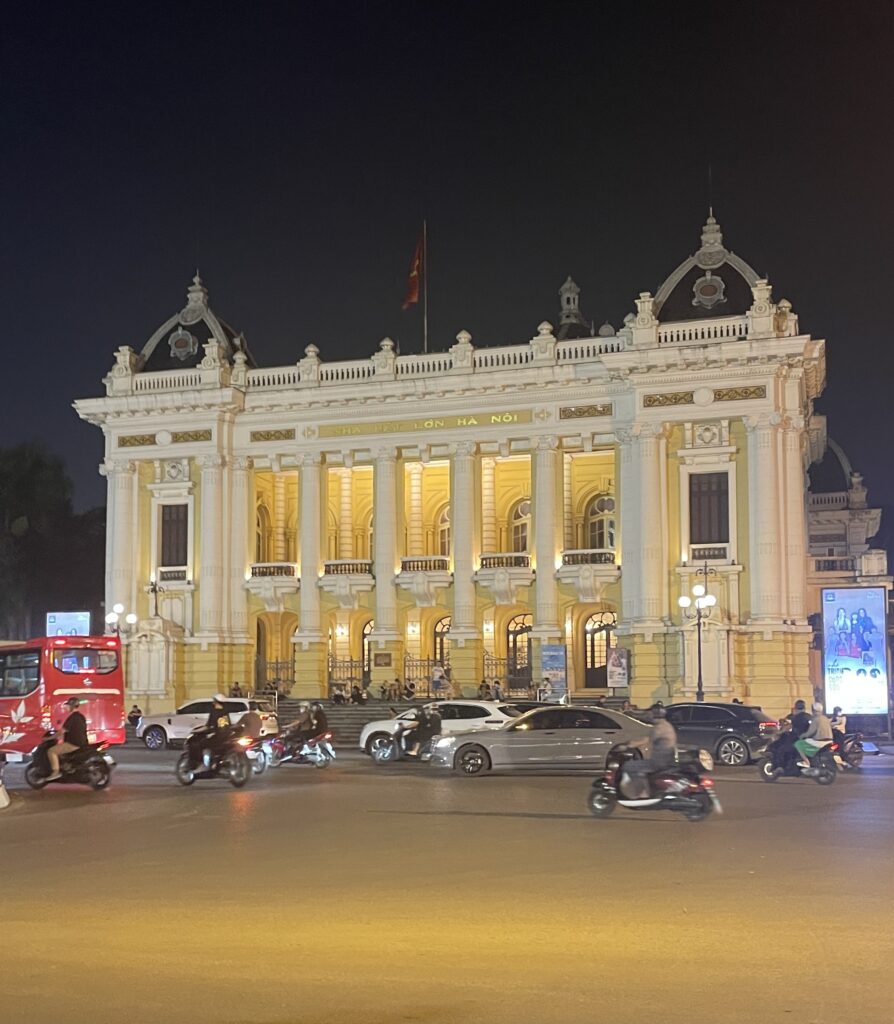
- Good for: Couples, history buffs, culture lovers
- Vibe: Elegant, spacious, grand colonial charm
- Pros & Cons: Upscale and quieter than the Old Quarter, but more expensive and less local
Just a few minutes from the madness of the Old Quarter, the French Quarter feels like stepping into another city entirely.
Wide boulevards, grand colonial buildings, and leafy streets give it a calm, polished feel, more croissants and art galleries than bun cha and scooters.
This is the Hanoi of museums, high-end hotels, and stylish cafés with air conditioning and strong espresso. You’re close to cultural sites like the Hanoi Opera House and Hoa Lo Prison, and there’s a bit more breathing room here, both literally and figuratively.
If you’re sightseeing nearby, don’t miss the boldest highlights from the city’s cultural scene, many of which are in the best things to do in Hanoi.
If you’re not on a tight budget and want somewhere that offers a more relaxed landing pad after a day of sightseeing, the French Quarter hits the mark. Just know that some of that gritty Hanoi charm is traded for polish and price tags.
Top Hotels in the French Quarter
Hotel de Lagom – Luxury
Hotel de l’Opera Hanoi – Mid-Range
Bluebell Hotel – Budget
Tay Ho (West Lake)
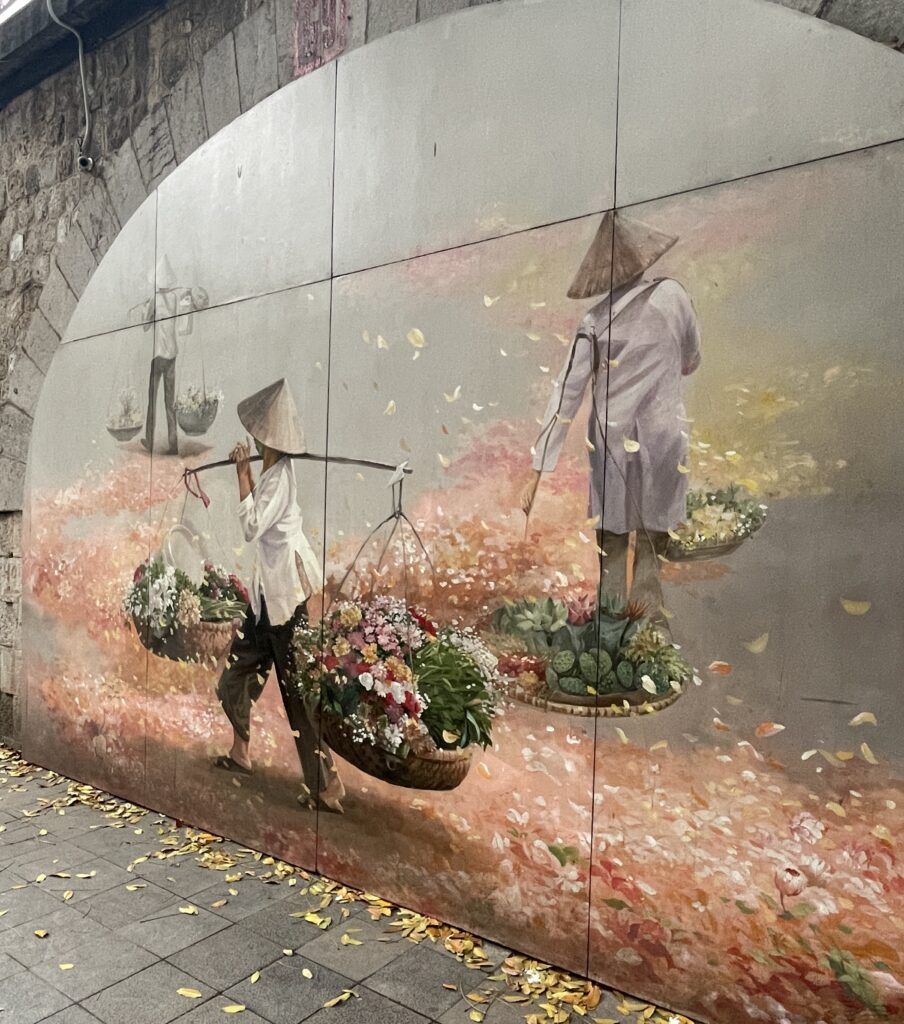
- Good for: Digital nomads, long-stay travelers, café dwellers
- Vibe: Expat-friendly, laid-back, lakeside
- Pros & Cons: Scenic and spacious, but farther from Hanoi’s main attractions
Tay Ho is Hanoi’s chill zone. Set around West Lake, the largest lake in the city, this neighborhood attracts expats, remote workers, and travelers who want a slower pace with room to breathe.
You’ll find smoothie bowls, wine bars, boutique yoga studios, and enough lakeside cafés to rotate through for weeks.
The area is also great for morning jogs or evening sunset strolls, and it has a bit more of a modern, globalized feel.
However, Tay Ho isn’t ideal for short-term tourists looking to visit the major sights. It’s a solid 20–30 minute ride into the Old Quarter, depending on traffic. Still, if you’re staying for a while or want to see the expat side of Hanoi, it’s a very livable (and likable) base.
Top Hotels in Tay Ho (West Lake)
Fraser Suites Hanoi – Luxury
Diamond Westlake Suites – Mid-Range
Ba Dinh District
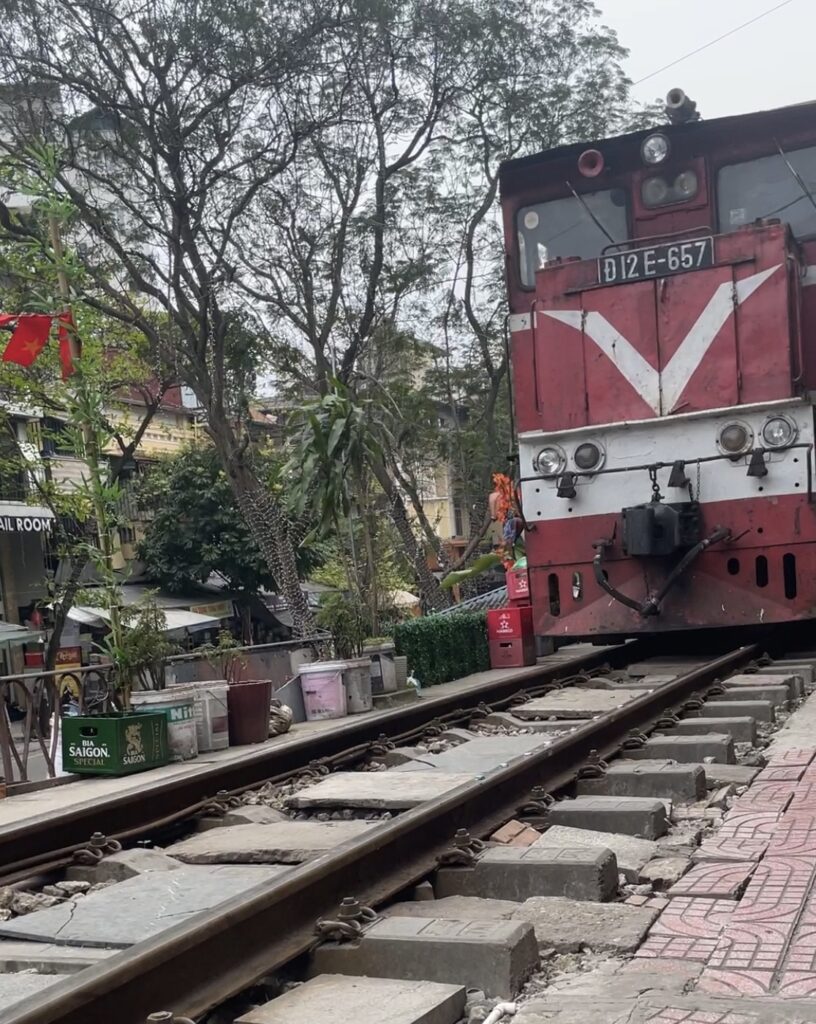
- Good for: History lovers, embassy-hoppers, mature travelers
- Vibe: Calm, leafy, and governmental
- Pros & Cons: Central and historical, but quiet at night and less “local flavor” than other areas
Ba Dinh is where Hanoi’s power and history intersect. It’s home to the Ho Chi Minh Mausoleum, the Presidential Palace, and several embassies, so the vibe is a bit more formal, with less chaos and more calm.
That said, this isn’t the area for wild nightlife or neon-lit street food lanes. It’s better suited for travelers who want to be near major landmarks but appreciate an earlier bedtime.
The tree-lined streets are lovely, there’s a touch of old-school charm here, and you’ll be within walking distance of museums, pagodas, and stately government buildings. It’s a solid pick for travelers with a cultural focus and a love for order.
Top Hotels in Ba Dinh
Lotte Hotel Hanoi – Luxury
Grandiose Hotel & Spa – Mid-Range
A25 19 Phan – Budget
Hai Ba Trung District
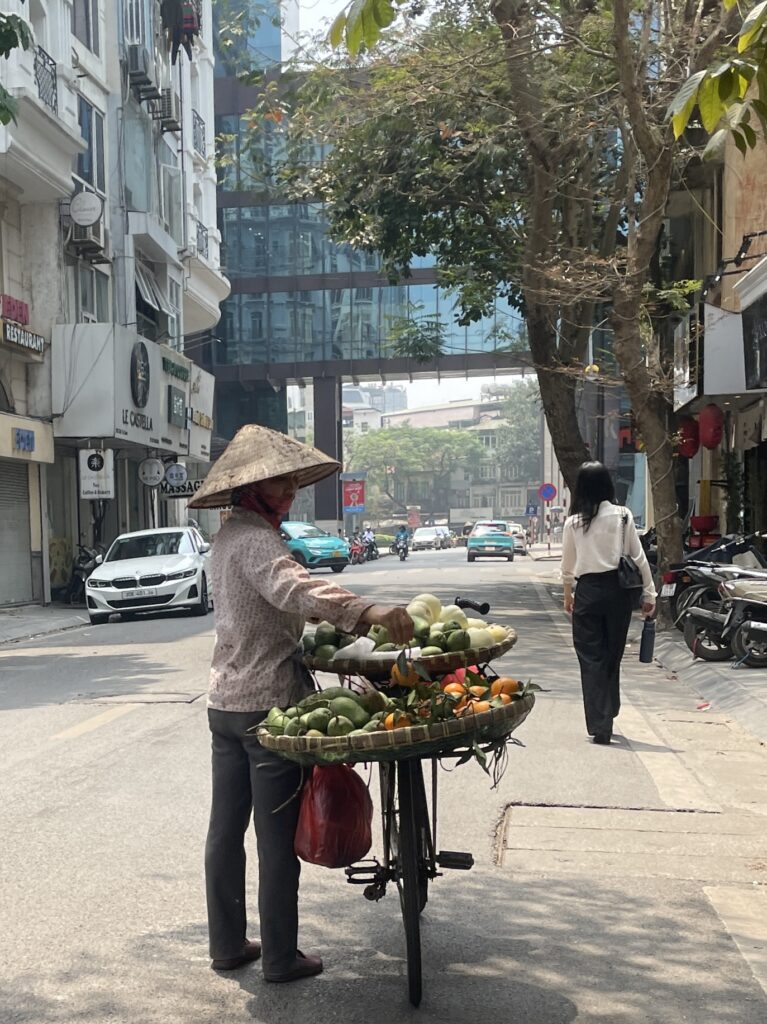
- Good for: Returning visitors, food lovers, those seeking local vibes
- Vibe: Lively, local, slightly upscale
- Pros & Cons: Great food scene and less touristy, but limited sightseeing and farther from nightlife
Hai Ba Trung sits just south of Hoan Kiem Lake and the Old Quarter, offering a calmer, more lived-in vibe without being too far from the action. This is actually where I usually stay when I’m in Hanoi, and for a good reason.
It’s a mostly local area, so you won’t see many tour groups or souvenir shops. What you will find is excellent street food, trendy Vietnamese cafés, and quieter streets that still feel very “Hanoi,” just without the constant buzz of motorbikes and selfie sticks.
There’s another lovely lake here too, Thong Nhat Park sits on its banks and makes for a great morning walk or sunset chill session.
The location’s solid: just a short Grab ride to the Old Quarter or Hoan Kiem, but with way more breathing room and better odds of finding a great bowl of bun cha without a line.
If you want to experience Hanoi as the locals do, while still being connected to the city’s highlights, Hai Ba Trung is a strong choice.
Top Hotels in Hai Ba Trung
Hotel du Parc Hanoi – Luxury
Nesta Hanoi Hotel – Mid-Range
The One Hostel Hanoi – Budget
Dong Da District
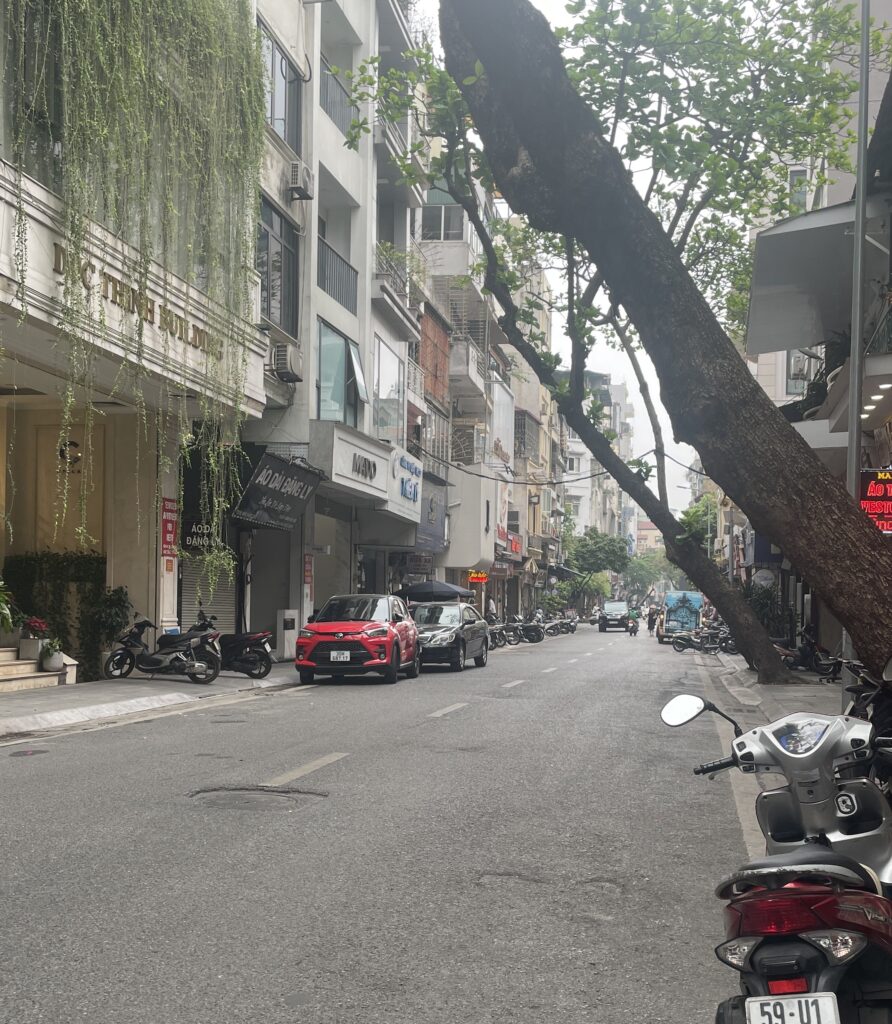
- Good for: Budget travelers, university visitors, those wanting fewer tourists
- Vibe: Local, academic, lived-in
- Pros & Cons: Affordable and authentic, but not walkable to main sights and light on attractions
If you’re the kind of traveler who likes to see a city beyond its tourist zones, Dong Da is worth considering.
It’s a densely populated district home to several universities, so expect a youthful energy and lots of cheap eats.
There’s nothing overly pretty or polished here, and that’s the point. It’s more real-life Hanoi, full of local markets, old apartment blocks, and busy street corners that feel untouched by tourism.
You’ll need to Grab or taxi into central Hanoi to visit major attractions, but if you’re in town longer or prefer a deeper cultural dive, this is a wallet-friendly and refreshingly down-to-earth area to base yourself.
Top Hotels in Dong Da
IVY Hanoi – Luxury
Pullman Hanoi – Mid-Range
Lubi House – Budget
Cau Giay District

- Good for: Budget travelers, university visitors, those wanting fewer tourists
- Vibe: Local, academic, lived-in
- Pros & Cons: Affordable and authentic, but not walkable to main sights and light on attractions
If you’re the kind of traveler who likes to see a city beyond its tourist zones, Dong Da is worth considering. It’s a densely populated district home to several universities, so expect a youthful energy and lots of cheap eats.
There’s nothing overly pretty or polished here, and that’s kind of the point. It’s more real-life Hanoi, full of local markets, old apartment blocks, and busy street corners that feel untouched by tourism.
You’ll need to Grab or taxi into central Hanoi to visit major attractions, but if you’re in town longer or prefer a deeper cultural dive, this is a wallet-friendly and refreshingly down-to-earth area to base yourself.
Top Hotels in Cau Giay
Novotel Suites Hanoi – Luxury
Grand K Hotel Suites Hanoi – Mid‑Range
Luxeden Hotel – Budget
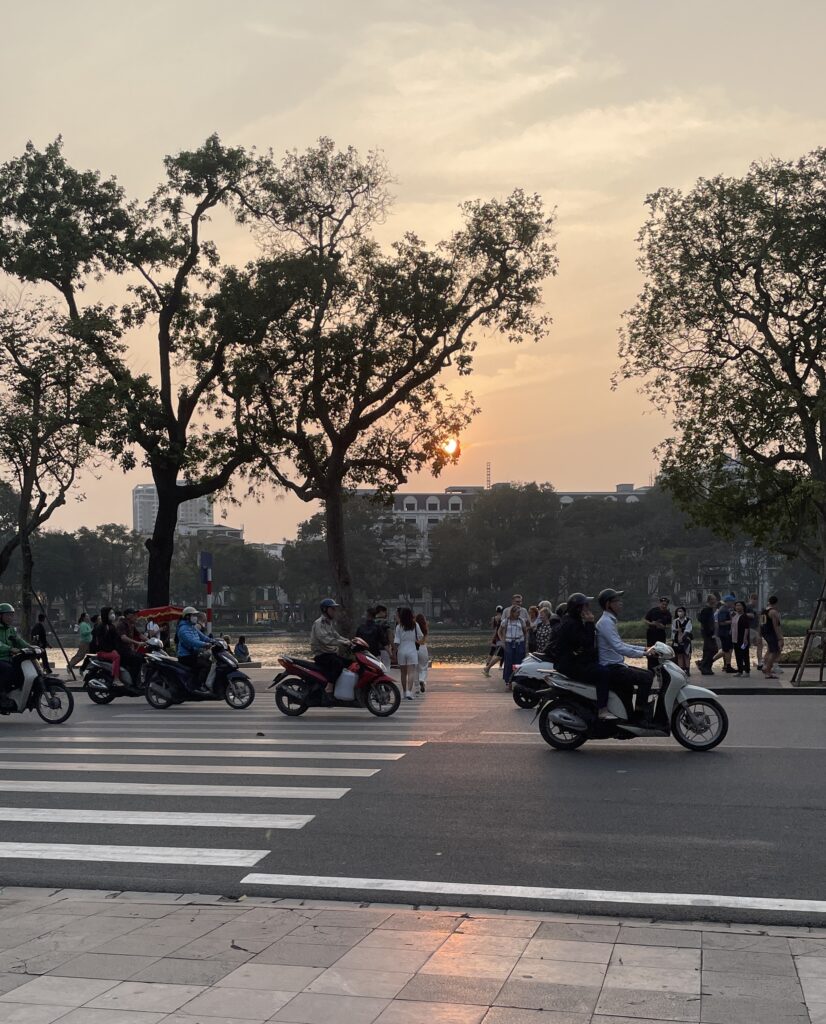
Getting from Noi Bai Airport to Hanoi
Once you land at Nội Bài International Airport, the real adventure begins, getting yourself to the city without being scammed or overcharged.
Hanoi is roughly 30 to 40 minutes away, and right after customs, you’ll be met with a wave of drivers waving signs, shouting rates, or trying to get your attention like it’s a street auction.
Taxi scams are common, especially if you’re unfamiliar with the scene. Some drivers will quote you sky-high prices, while others might have tampered meters that tick up faster than your flight boarding call. Stick with the options below!
- Private Transfer: The easiest, smoothest way to get into Hanoi. Book in advance through your hotel or Klook. A driver will meet you at arrivals holding a sign, help with luggage, and you’ll be on your way, no stress, no scams, no stops.
- Grab: Grab is one of the most reliable and affordable ways to get into Hanoi. Just download the app in advance and ensure you’ve got mobile data or Wi-Fi. After exiting the terminal, walk about 1–2 minutes to the designated Grab pick-up zone, usually marked with signage. Drivers sometimes cancel last minute, so be patient.
- Airport Taxi (Use Caution): Metered taxis are available just outside the terminal; however, use reputable companies only, such as Mai Linh or Vinasun. Always confirm the meter is on, and don’t let anyone load your bags without agreeing on a price first, even “helpers” sometimes expect a tip or try to redirect you.
- Shared Shuttle or Bus: Great for budget travelers, but you’ll sacrifice time and comfort. You can book these online or at the airport kiosk. Some hotels offer group shuttle options as well, though they may operate on fixed schedules.
Whichever option you choose, just remember: don’t follow anyone who randomly offers you a ride outside the official zones.
Trust me, I’ve been to Vietnam multiple times, and that “cheap taxi” always ends up costing you more, whether in cash or a travel scam.
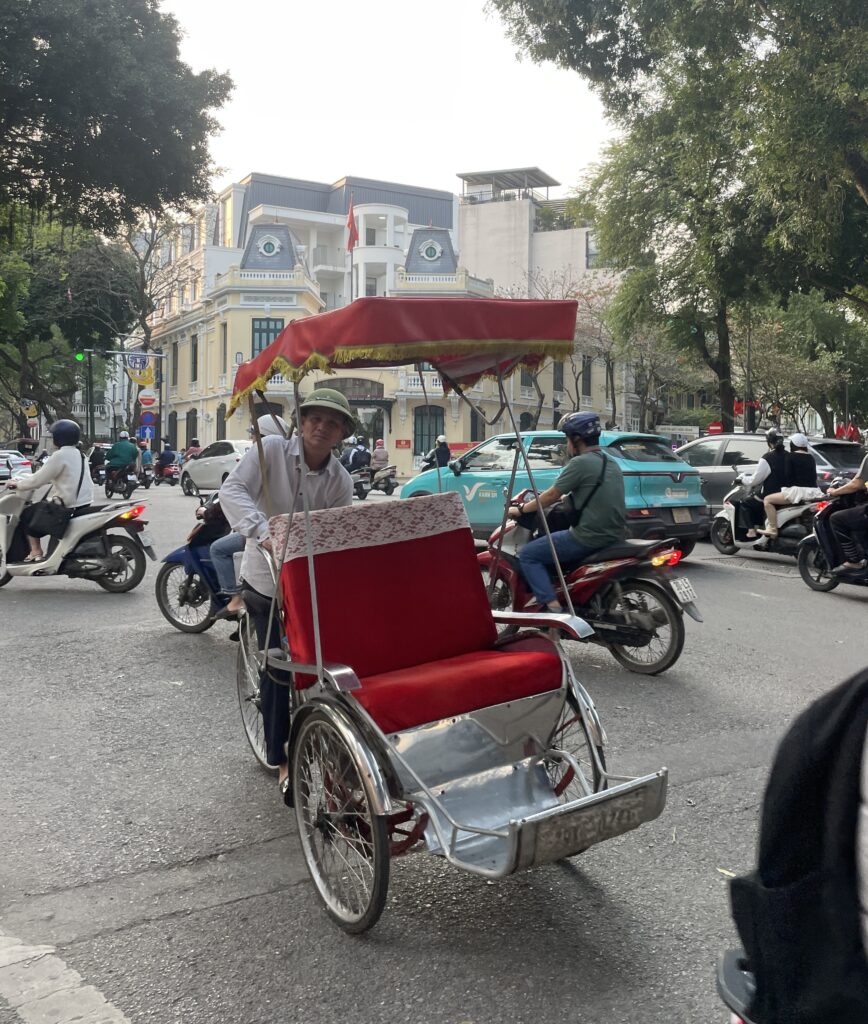
Tips for Booking Hotels in Hanoi
Hanoi has no shortage of accommodation options, from luxury hotels with rooftop pools to boutique stays tucked down narrow alleys.
But with so many options, choosing the right one takes a little strategy. Here’s what I’ve learned after multiple trips to the capital:
- Know Your Priorities: If nightlife, food tours, and walkable streets are your thing, base yourself near Hoan Kiem or the Old Quarter.
- Don’t default to the Old Quarter just because it pops up everywhere: Many travelers assume it’s the only “central” area, book their entire stay there, and end up overwhelmed. Hanoi is big, layered, and way more relaxing if you pick the right pocket.
- Book Early During Peak Season: From November to February, Hanoi sees a surge in tourism. If you’re eyeing popular spots or boutique stays, book ahead, especially during Tet.
- Tet Holiday Crowds (Late Jan or Early Feb): Tet is Vietnam’s Lunar New Year and the country’s biggest holiday. In Hanoi, where traditions run strong, the city essentially shuts down for 2–3 days; restaurants, shops, and even some hotels may close. While the festive atmosphere is beautiful, please note that services may be limited. It’s less intense in central and southern Vietnam.
- Noise Sensitivity? Choose Wisely: Hanoi’s buzz is part of the charm… until it’s 2 a.m. and a karaoke bar is still going strong. Opt for quieter districts or request an interior-facing room if you’re a light sleeper.
- Watch Out for Overstated Amenities: “City view” might mean “view of the building across the alley.” Read recent reviews and look at guest photos for the real deal.
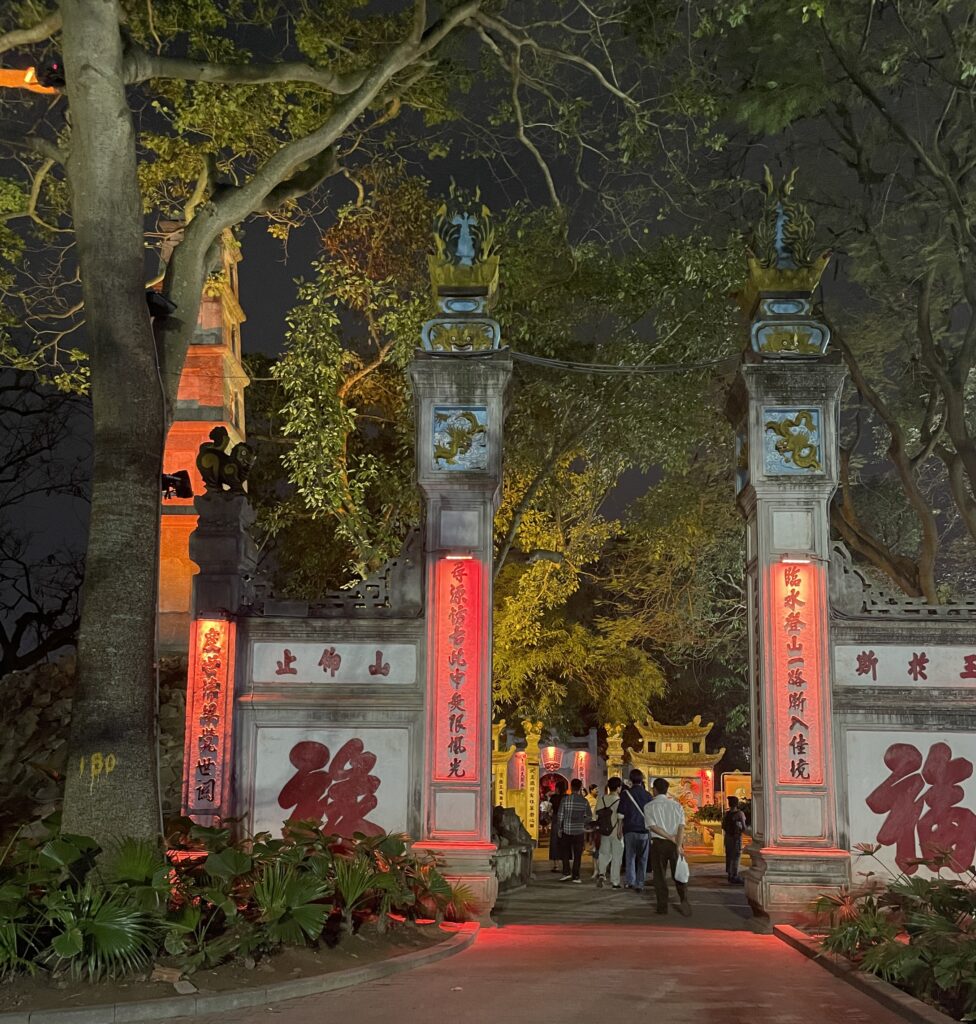
How Many Days Should You Stay in Hanoi?
Two to three days is a solid amount of time to explore Hanoi itself, especially if you want to soak in the Old Quarter, visit the historical sites, and still leave time to eat your weight in bun cha and egg coffee.
But Hanoi also serves as the perfect base for northern Vietnam, and that’s where things get interesting.
If you’re planning to do day trips or overnight excursions to nearby spots like Ninh Binh, the mountain town of Sa Pa, or even Ha Long Bay, your itinerary easily stretches to five or six days. And honestly, it’s worth it.
The Northern region of Vietnam is wildly scenic, less developed in parts, and rich in cultural heritage that you won’t find in the south. Best of all? It feels like you’ve stepped back in time!
So if you’re just ticking off city sights, 2–3 days will suffice. But if you’re using Hanoi as your travel base to experience the surrounding beauty of northern Vietnam, consider staying longer.
If you’re unsure how long to spend in the city, my 5-day Hanoi itinerary breaks it down with a perfect mix of sights, food, and downtime.
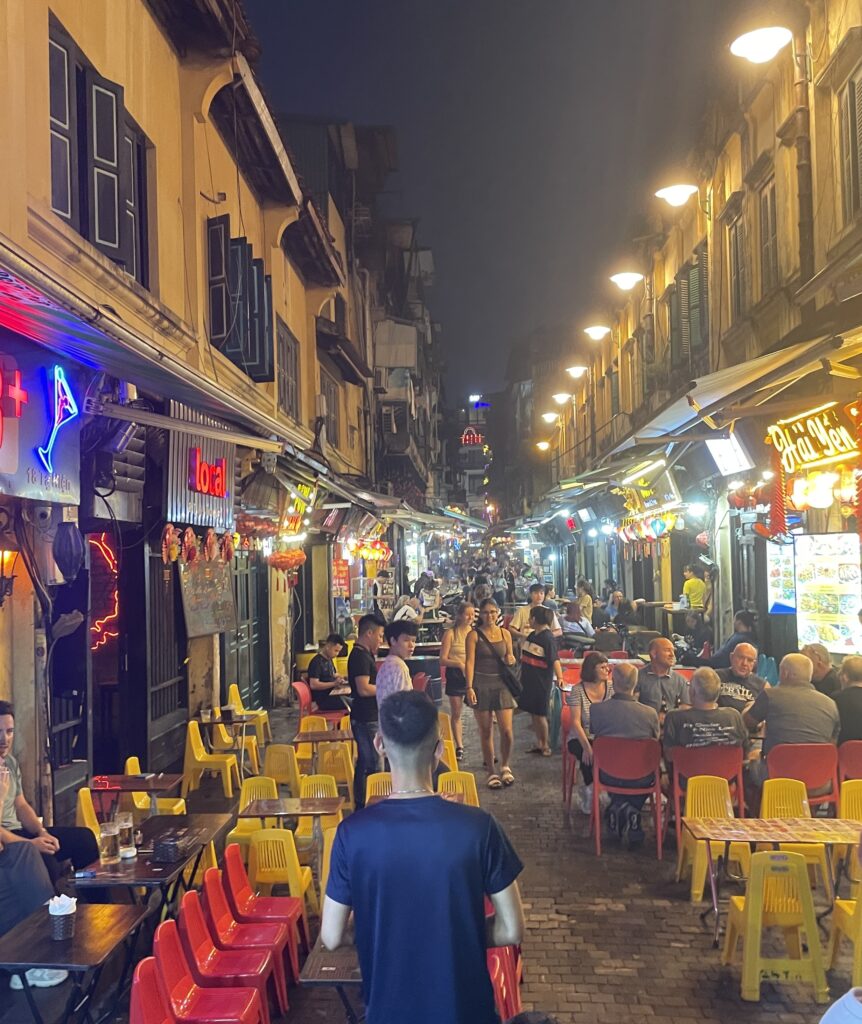
Choosing the Best Place to Stay in Hanoi: Final Thoughts
Hanoi isn’t a one-size-fits-all kind of city, and that’s exactly why I love it. Each district offers a unique experience, whether you’re looking for peaceful lakeside mornings, wild street food nights, or a more local and quieter spot like Hai Ba Trung (which, by the way, is where I always stay).
What makes Hanoi such an intriguing place to stay is that it really depends on your pace. Want nonstop energy? Hoan Kiem and the Old Quarter are right there.
Prefer a little space, more locals, and still just minutes from all the action? Hai Ba Trung or Tay Ho will serve you well.
And don’t forget about the neighborhoods with a different rhythm, places like Cau Giay, perfect if you’re in town for work or longer stays, or Ba Dinh, if you’re chasing embassies, museums, or something calmer.
If you’ve also got your eye on southern Vietnam, the vibe changes entirely in district-diverse Ho Chi Minh City, where planning where to stay is a whole different game.
Now, let me give you one big tip I wish more people knew: don’t book your entire stay in the Old Quarter just because it dominates search results or your friend mentioned it.
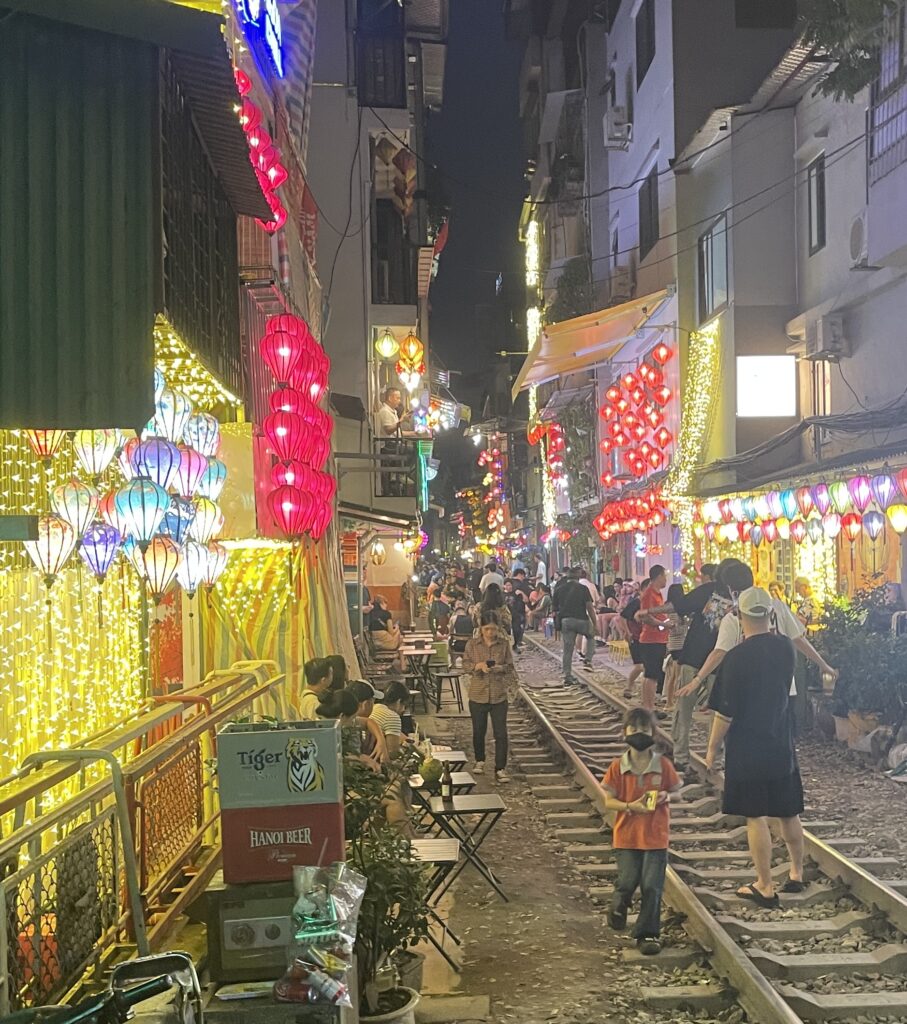
I love it — but it’s hectic. The streets are tiny, the traffic’s wild, and the energy is constant. For many travelers, that ends up being their entire impression of Hanoi, and they leave thinking the city is nothing but chaos.
The truth? You just stayed in the most crowded, condensed part of the city. There are plenty of laid-back, spacious, and locally feeling areas that offer a distinctly different take on Hanoi; you just need to pick the right neighborhood.
Hanoi reminds me a lot of Chiang Mai. Hear me out: if Chiang Mai’s Old Town is your relaxing, café-filled core, Hanoi’s Old Quarter is its louder, more chaotic cousin, but venture out just a bit, and the calm creeps in. It’s a layered city, and when you find your corner, it’s surprisingly soothing.
Also, keep in mind that Hanoi undergoes a complete transformation between early morning and evening. Some areas are chaotic by day, peaceful by night (and vice versa). Try exploring both light and dark; it’ll give you a better sense of which area feels right for you.
Wherever you end up staying, my best advice is this: grab a coffee, wander aimlessly, and let the city’s rhythm carry you.
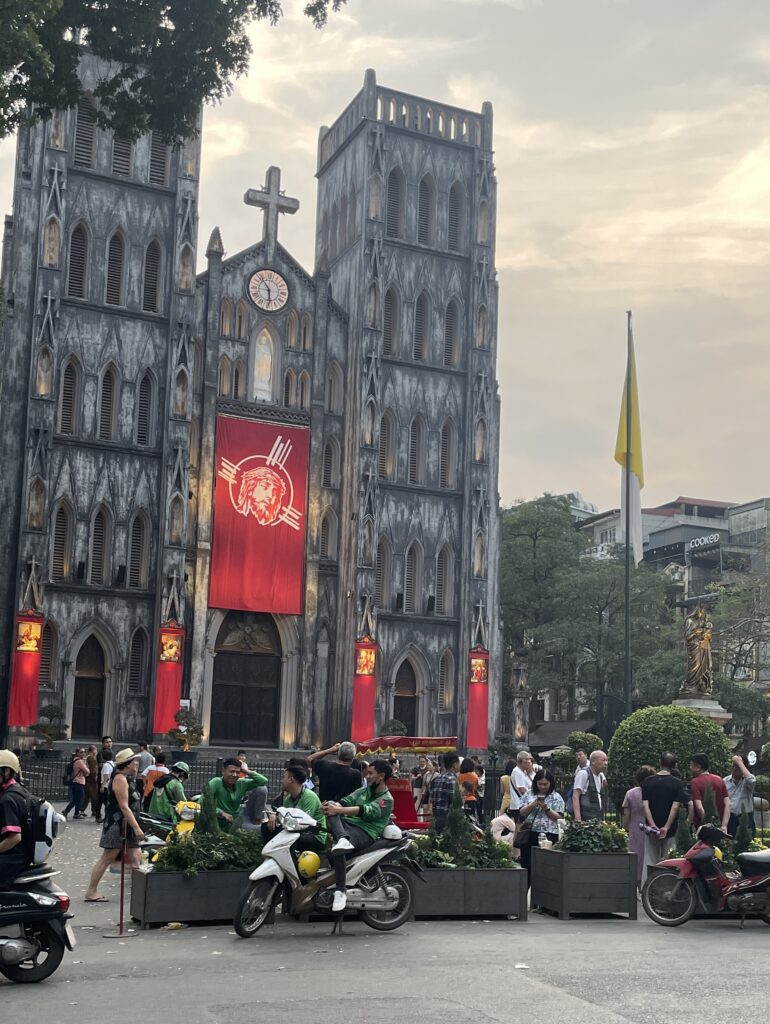
What neighborhood in Hanoi is best for first-time visitors?
For newcomers, the Old Quarter (Hoan Kiem District) is the most popular choice; it’s walkable, atmospheric, and packed with street food and attractions, such as Hoan Kiem Lake. Hanoi migplease ht be chaotic on the surface, but once you settle.
Which Hanoi area is quieter but still central?
Areas like Hai Bà Trung or Ba Đình offer a more peaceful stay, while remaining within easy reach of the Old Quarter.
These neighborhoods are more residential and local-feeling, but you’re still just a Grab or a walk away.
Is West Lake (Tay Ho) good for long stays?
Yes, Tay Ho (West Lake) is a favorite among digital nomads and expats due to its relaxed lakeside atmosphere, plentiful cafés, and green spaces.
It’s more upscale and spacious, but expect a 15–20 minute Grab ride to reach central Hanoi.
How far in advance should I book accommodation in Hanoi?
If you’re planning to visit during Tet (Lunar New Year) or the dry high season (December–February), book at least 2‑3 months ahead.
Hotels sell out quickly during this period, especially in popular areas such as the Old Quarter and Tay Ho. Early booking is key.

